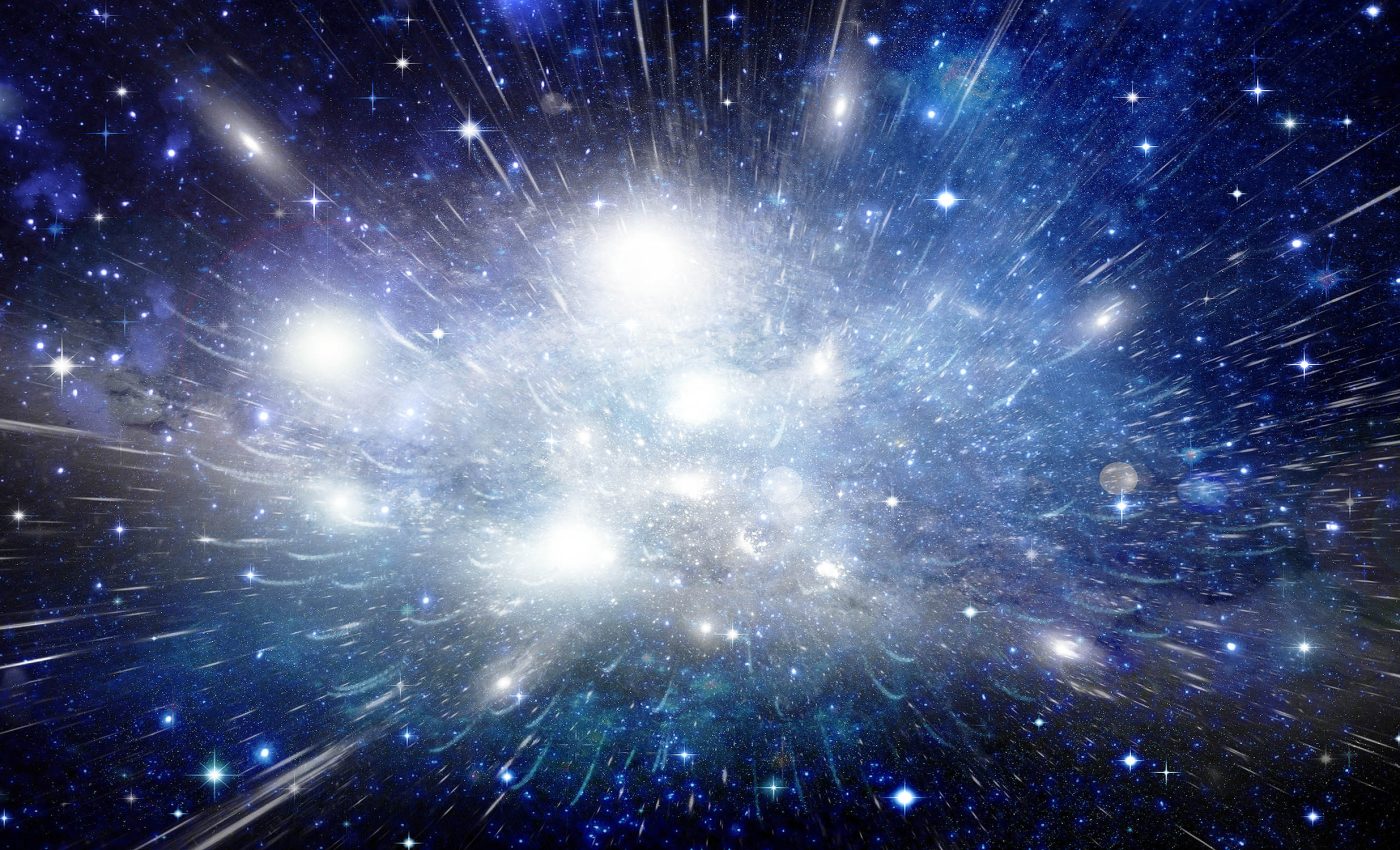
Multiple "Big Bangs" drive cosmic expansion, not dark matter or energy, study says
A new idea about cosmic expansion has emerged that might remove the need for dark matter and dark energy altogether.
Experts have long debated exotic solutions to explain cosmic acceleration. Now, an alternate approach proposes a scenario in which more than one burst of creation took place, rather than a singular event.
The model originates from Dr. Richard Lieu, a physics professor at The University of Alabama in Huntsville. He suggests an ongoing series of events that shape galactic structure in real and unexpected ways.
Sudden bursts drive cosmic expansion
These repeated bursts, called “transient temporal singularities,” may happen so fast that observers never witness them.
The universe, according to this view, gains its expanded form from multiple sudden shifts instead of a single grand explosion.
“This new paper proposes an improved version of the earlier model, which is also radically different,” said Dr. Lieu. He emphasized that these bursts “uniformly affect all space to replace conventional dark matter and dark energy.”
Understanding dark matter and energy
According to commonly accepted theory, dark matter and dark energy drive cosmic expansion and compose roughly 95% of the Universe. The problem is, neither of these things have been definitively proven to exist.
For now, cosmology assumes that dark matter acts like an invisible glue, holding galaxies together. It doesn’t emit light or energy, so we can’t see it directly, but we know it’s there because galaxies spin way too fast for visible matter alone to keep them from flying apart.
Without dark matter, the structure of the universe would look totally different – more chaotic, less organized. It’s like the scaffolding that lets cosmic architecture take form.
Dark energy, on the other hand, is a bit more mysterious and a lot more powerful. It’s the force behind the accelerating expansion of the universe.
Instead of gravity pulling everything back together, dark energy pushes space itself outward – faster and faster as time goes on.
Imagine stretching a balloon, and then suddenly that balloon starts inflating on its own at breakneck speed. That’s what dark energy is doing to the cosmos.
Matter appears and vanishes briefly
The theory sidesteps any reliance on negative mass or negative density. It outlines a process in which matter appears and disappears, providing the momentum needed for cosmic growth.
Researchers following this path acknowledge that there is still a place for known physics. Yet they note that singularities do not violate conservation laws if they happen in short, abrupt flashes.
Model builds on steady state theory
“Sir Fred Hoyle opposed Big Bang cosmology and postulated a steady state model of the universe,” said Dr. Lieu.
Hoyle’s view relied on a continual source of matter, though it clashed with known conservation rules.
Dr. Lieu’s model tries to resolve that conflict with carefully timed bursts that obey energy constraints. The notion recalls steady state logic but introduces a different mechanism to maintain total balance.
Old ideas on cosmic expansion
Older theories proposed negative pressure to describe the universe’s acceleration. This occurs when certain forms of energy push outward, creating an effect that counters gravity.
Einstein proposed a similar concept in 1917 to explain how the cosmos might hold itself steady. This fresh approach weaves that idea into singularities that appear, then vanish without leaving direct traces.
Cosmic expansion without dark matter
The model hints that galaxies can form and remain bound without unseen particles. One brief surge might seed structures, and subsequent surges keep the universe expanding in steps.
Observation remains key. If these bursts are real, they might explain why direct searches for missing matter or unusual energy have yet to confirm anything conclusive.
How telescopes can confirm bursts
Dr. Lieu points to Earth-based telescopes as a potential way to check for these cosmic jumps. Slicing data by redshift could reveal subtle irregularities in how distance scales with time.
He suggests that a high-resolution approach might spot discontinuities in the “Hubble diagram,” an established method of gauging cosmic distances.
Catching a slight break in data trends might confirm that cosmic expansion does not happen smoothly.
Challenges to the Big Bang story
The standard view relies on a single creation event at the start of time. Alternative perspectives do not necessarily overthrow that story but raise the idea of multiple surges of matter and energy.
This approach challenges assumptions about the cosmos having only one moment of birth. If more bursts took place, they might stretch, shape, or energize space in irregular yet calculable steps.
These ideas link naturally to instruments like the Keck Observatory in Hawaii and the Isaac Newton Group of Telescopes in Spain.
Focusing on different redshift ranges over billions of light-years could gather the evidence necessary to distinguish between single-surge expansion and repeated bursts.
Some remain cautious, noting that past attempts to replace dark energy have faced strict challenges. Yet the possibility of verifying this model with improved detectors and broader data sets remains open.
Future clues in cosmic expansion
Astronomers may seek patterns left by short-lived cosmic shifts. If matter indeed pops in and out of existence on fleeting timescales, it would explain why conventional searches for missing mass have so far been fruitless.
This line of research also revisits how cosmic expansion fits within fundamental physics. Each singular burst must respect mass-energy conservation, implying a deeper interplay between space, time, and matter.
The study is published in Classical and Quantum Gravity.
—–
Like what you read? Subscribe to our newsletter for engaging articles, exclusive content, and the latest updates.
Check us out on EarthSnap, a free app brought to you by Eric Ralls and Earth.com.
—–













